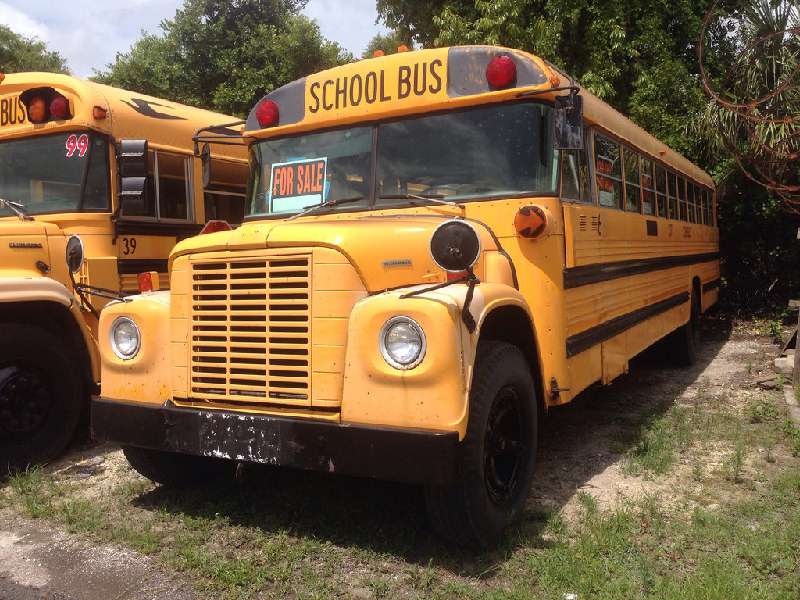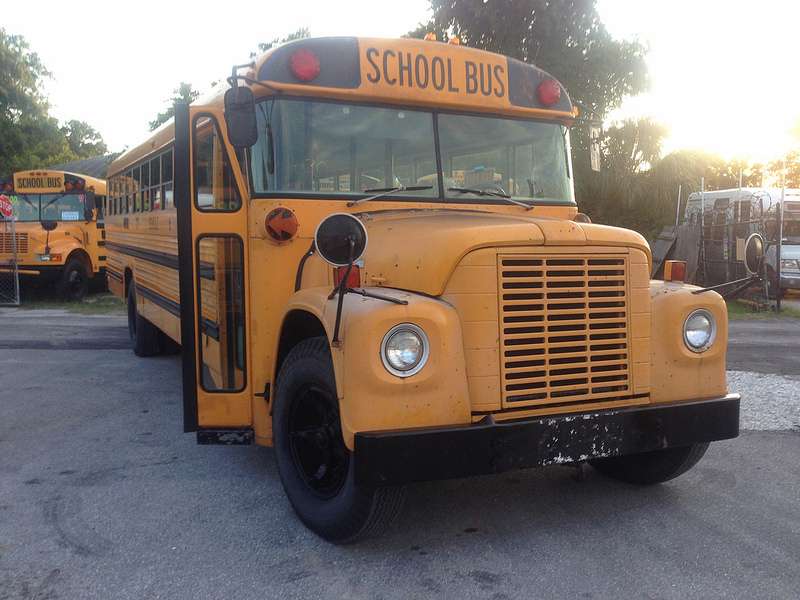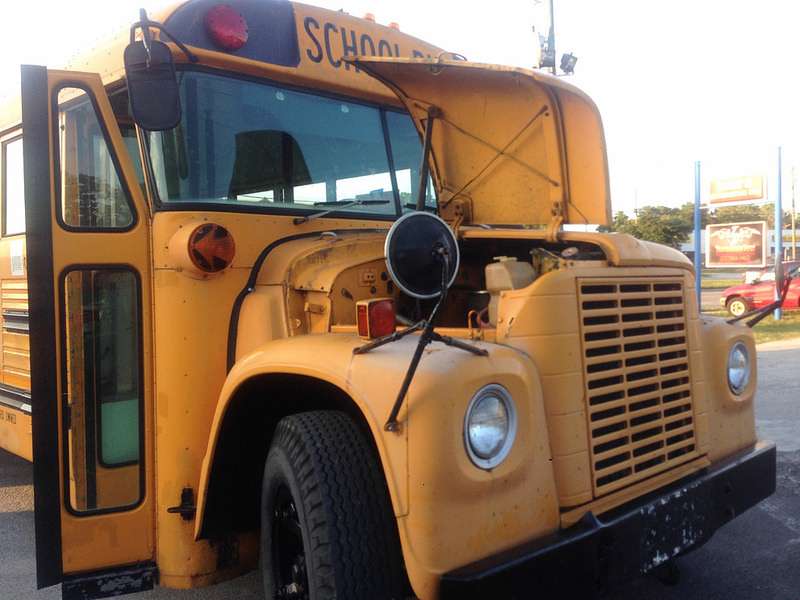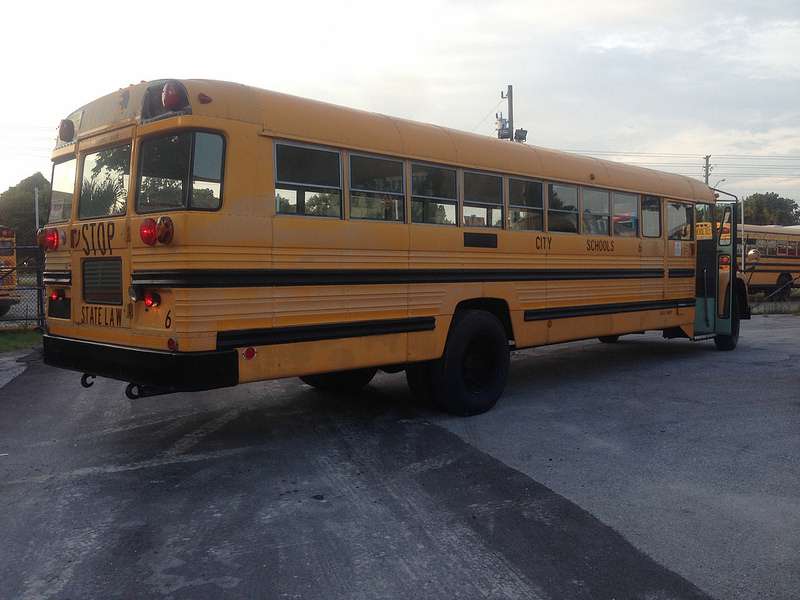345 V8 gasoline
5 speed manual transmission
air brakes
Just driven 1100 miles to florida. It drove like a brand new bus and had incredible horsepower. It climbed the jelico mountain on i-75 at 50 mph. Not many buses will do that!! The fuel mileage was great, as well. 8.4 mpg on the trip, which included all idle time, the mountain driving, and a couple of huge traffic jams along the way. WOW, did this bus ever get the attention on the trip! At the gas stations, and even during the traffic jams on the freeway, people came up to me and wanted to know about the bus.
It used no oil at all on the 1100 mile trip. It idles for long periods without loading up on gasoline or oil. The engine is exceptionally tight and shows absolutely no sign of being tired.
The steering system was super tight, as well. The bus, literally, drives like a brand new one. There is no pull, shimmy, shake, or wobble. It goes down the road perfectly straight and smooth. Top speed was 65 for me, but it might go 70. I never did let it out all the way. I preferred to drive 55 and 60. It ran very well at those speeds.
This bus meets all 1972 specifications. That was a year of its own! The seats were required to have padded backs. The hand rails ahead of the seats were required to have padding. An 11 row or larger bus was required to have air brakes, and the air brake system is different from those that were used other years. There are 2 buttons. One works like regular air brakes. In, the parking brakes are released. Out, the parking brakes are set. The second button allows you, when pushed in, to move the bus even with the parking brakes set and not enough air pressure to release them. This was a safety device in case a bus lost air pressure and could not get off a railroad crossing or out of a busy intersection. It was all good ideas that made the 1972 school bus much safer, but the 'experts' decided it was too expensive. So, in 1973, the buses went back to the 1971 standards. It wasn't until 1977 that school bus standards changed, again. At that time, they had some improvements in safety that were not included in 1972 (like caged fuel tanks and modesty barriers). So, 1972 still, today, remains the only year that this braking system was used, that these padded seats were used, that these padded rails were used, and so on. It makes this a very rare school!
Also, this was the year that handicapped children were required to be carried to and from school in yellow school buses. This bus is a 1972 bus with a wheelchair lift. This makes it the first year that wheelchair lifts were required on yellow school buses transporting handicapped children. No bus manufacturer offered them, yet. So, this bus had to be put on a train and shipped to Virginia, where the wheelchair lift was added. Then, it had to be shipped back to the manufacturer in Ohio, and was then delivered to an Ohio school district. When I drove it to Florida, that was the first long highway trip it had ever been on!
Here are some photos of it, as it arrived in Florida. It has not been to the detail shop, so it is still 'as is'. We can clean it up. We can repaint it, if you like. We can do whatever you like. OR, you can buy it 'as is' and keep it original, the same exact way it came from the school.
THIS IS LITERALLY A MUSEUM PIECE!







WORK DONE PRIOR TO DRIVING IT TO FLORIDA:
* OIL CHANGE AND FILTER
* NEW FUEL PUMP
* NEW FUEL FILTER AND FUEL LINE
FROM FUEL PUMP TO CARBURETOR
* NEW POINTS, PLUGS, AND COIL
* CHASSIS LUBRICATION
* CHECK TIRE PRESSURES
This bus came to FL with the tires that were on it. It left Ohio with the gasoline that was in the fuel tank, and I bought regular ethanol-added gasoline when I could not find 'no alcohol' gasoline. I actually carried a spare fuel pump with me, just in case the new pump that i put on did not handle the alcohol. it did fine, so I still have a brand new fuel pump that I did not need. Having one with me meant I wouldn't have to look for one, should I need one. Yet, the NAPA store in OH where I bought the fuel pump had 2 in stock.
When I picked up the bus, every single light worked. Remarkably, even the dash lights all worked. It is rare when I drive any bus that the dash lights work properly. Yet, this old bus had everything working! Imagine... a bus so old (especially an International) that the dashboard wasn't a printed circuit full of bad connections. What a pleasure it was to drive!
I am asking $7500 for this bus. At this price, i will clean it up and have the oil changed, again, and the chassis lubed. If you want it 'as is', make me an offer. I will not sell it to someone who is going to chop it up into something other than a bus. I will not sell it to someone who does not want it to remain as it was built. If you want to modify it in any way, other than to convert it to a motorhome or camper, there is no reason to contact me. I will keep this bus until I die, rather than sell it to someone who is going to make something out of it other than what it is, now.
The engine is the original 1972 345 V8 with a 2 barrel carburetor. It would fit in any International pickup, Scout, or Travelall. HOWEVER, it belongs in this bus! One person asked me if they could put a 454 Chevy engine in it. I told them anything can be done, but not while it belongs to me. I would rather donate it to a museum the day I die than sell it to someone who is going to modify it.
IT IS A TRUE SURVIVOR! Survivor cars are worth a fortune. A survivor bus is, also! ESPECIALLY A 1972.